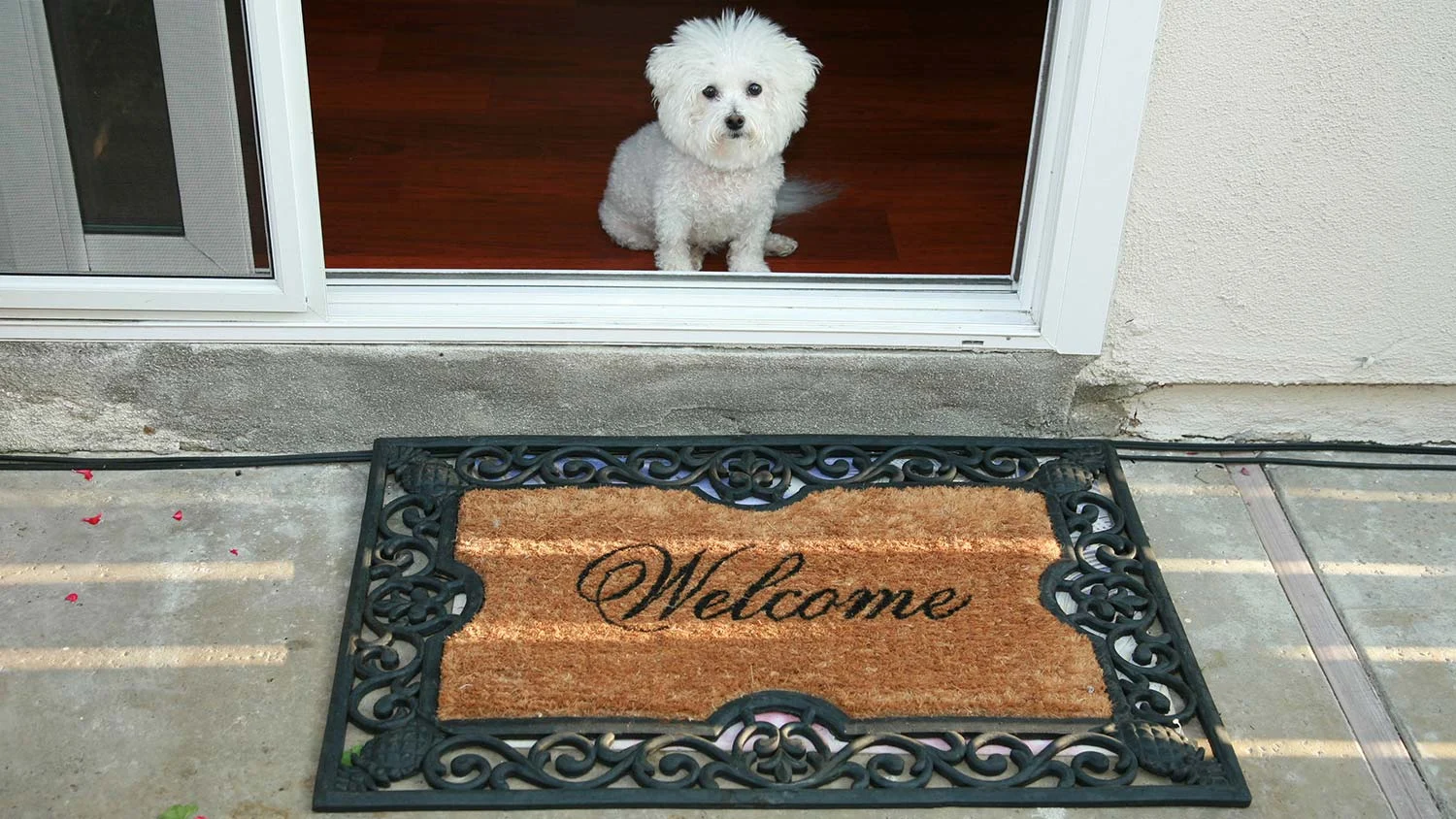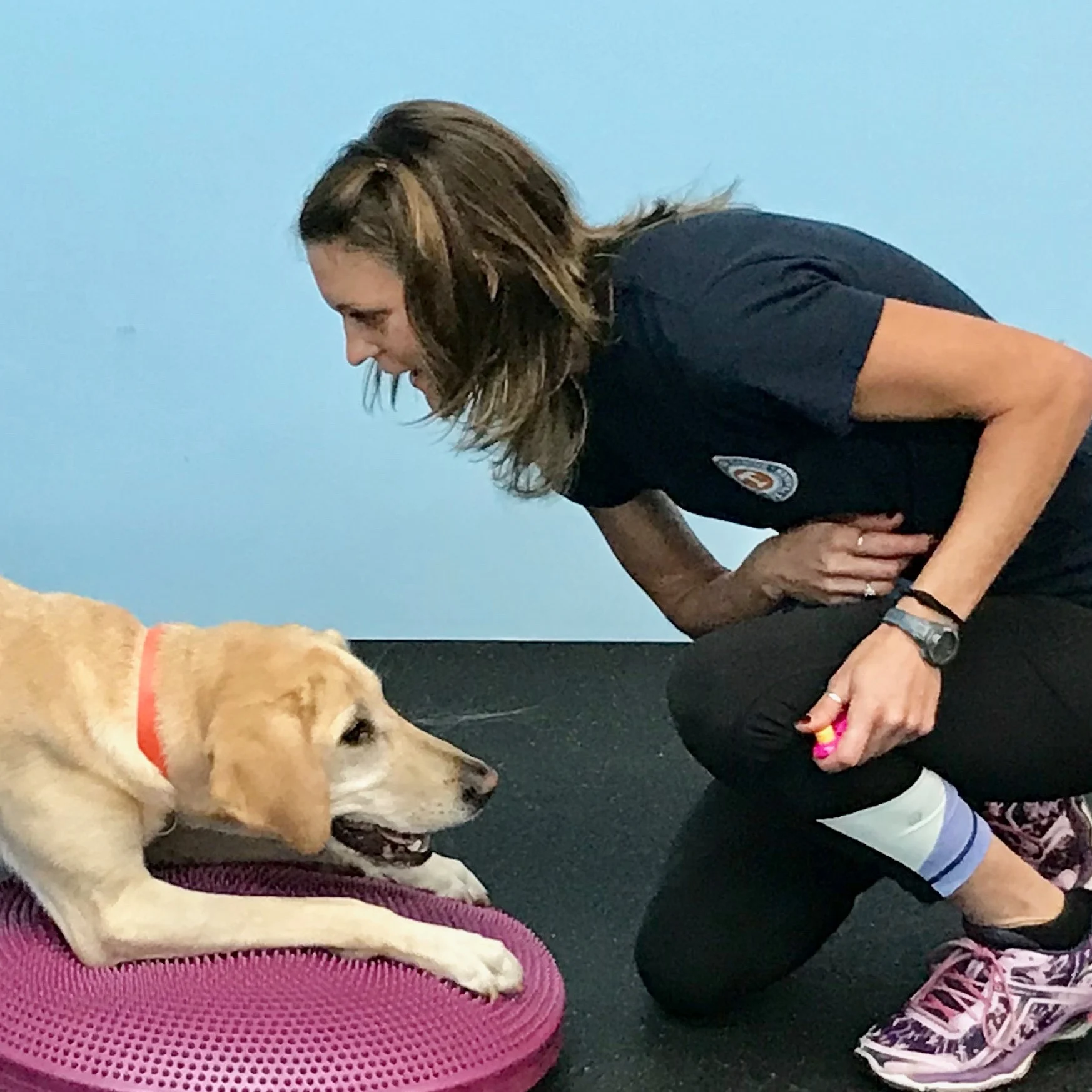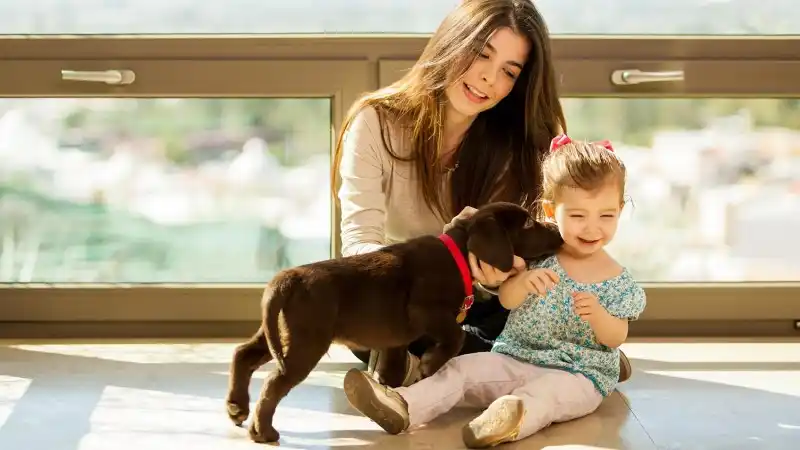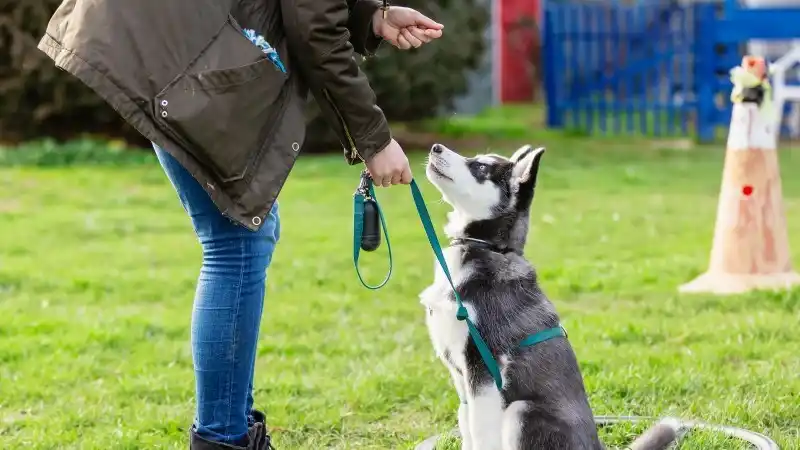Polite Greetings (No Jumping!)
"No jumping!" Do you hear yourself saying this to your dog every time you have a guest over to the house? Teach your pup to greet politely with these tips!

Teach your pooch to greet humans politely.
Having a dog that politely greets humans is at the top of the priority list for many dog owners. Dogs that jump could potentially injure a human; imagine a blocky, Labrador Retriever head accidentally head-bumping your head or a dog’s nails accidentally tearing your clothing – yowser! Read on to learn how to teach your canine courteous salutations.
Understand why dogs jump.
Dogs jump because they want your attention; remember that even negative attention, such as a glare or scolding, is still attention! Dogs also jump because it is their natural dog-dog greeting. When dogs meet each other, they smell each other’s faces and rear-ends to obtain information about what the other dog has been doing. They want to “smell where you’ve been” and “smell what you ate” today!
Avoid rough tactics.
Coarse methods to avoid include pushing the jumping dog off of you, kneeing the dog in the chest, or stepping on the dog’s toes. First, you don’t want to injure your dog. Second, this roughhousing behavior may actually be interpreted as play and as a “play even more intensely” invitation. Many dogs, especially young dogs, love wrestling. Imagine watching young tigers enthusiastically wrestle at the zoo – puppies do the same play-fighting! You don’t want your dog to think that he can train you to wrestle on cue when he initiates with a “leaping hello.”
Play the “sit for greetings” game.
Teach your dog that amazing things happen when he _doesn’t_jump. You’ll need a (human) greeter to help with this and you will have your dog on a short leash. Keep your leash-holding arm steady and solid. Have the greeter approach your dog but the greeter should stay far enough away from the dog that if the dog jumps, the dog cannot touch the greeter. More specifically, the dog is not close enough to the greeter to place his paws on the greeter’s thighs. If the dog leaps in the air and acts like popcorn popping, the greeter ignores him. The second the dog offers a sit (without a verbal command or other cue from the greeter or from you), the greeter should tell the dog “good dog” and reach to serenely pet the dog’s chest for 1-2 seconds. You may even have the greeter give your dog a treat – delivered underhand like an underhand softball pitch - to reward the dog for sitting before the greeter pets the dog’s chest. If practiced and rewarded, this “sitting to be greeted” behavior becomes the dog’s default behavior for getting attention from greeters, including human members of the dog’s household. Practice this drill with many different greeters in different locations.
I have my students play this greeting game in my puppy classes by having greeters rotate around the room to each dog. Find a local dog trainer and dog class to help perfect your dog’s greetings in a highly distracting environment.
Manage the situation.
Manage greetings by having your dog on leash when you are walking your dog, in a pet-friendly store, at the vet clinic, or in your own house with houseguests. The leash allows you to keep your dog near you so that you can reward your dog for good behaviors (using treats or kibble) and monitor when your dog receives interaction from greeters. Remember, dogs repeat behaviors that are rewarded. Over time, as your dog masters greetings, you will gradually use fewer treats to reward your dog and you may not need your dog on a leash.
Educate your greeters.
Instruct your greeters on the appropriate protocol for interaction with your dog and ask them to help you create a well-mannered hound. First, direct greeters that they may only pet your dog when the dog has all four paws on the ground and/or is seated, depending on your standards for greetings. Second, ask greeters to pet underhand; over-the-head petting intimidates some dogs and some dogs will jump up to check the hand for treats (and you don’t want jumping). Third, instruct greeters to stop providing attention to the dog immediately if your dog stops offering the proper behavior. Thus, if having all four paws on the ground is the required behavior and your dog starts to pounce with his front feet, then the greeter must pause attention – by backing away from the dog – for a few seconds. The greeter may continue giving your dog attention when your dog is again providing the polite pooch performance.
Be consistent.
Ensure your rules for greetings remain constant. Do not let a greeter who says, “Oh, its okay if he jumps on me!” spoil your hard-earned training.
Troubleshooting: Is your dog jumping on your when you walk in the door? If your dog is over the top when you open the door, simply leave for a few moments and then re-enter through the door. The first time you try this, you may need to arrive and leave 10-20 times until the dog figures out that one of his favorite human – you – only sticks around when he offers a certain “hello” behavior, such as sitting or standing politely. For very exuberant dogs, you may need to come through the door with a treat and lure the dog into a seated position (before the dog has a chance to jump), treat the dog, and then provide attention with underhand petting on the chest. Over time, fade the use of the lure and treat the dog for automatically offering the sit. Then fade the treat but continue to reward the polite greeting with attention.
Now that you’re prepared to master refined dog-human greetings, check out this blog to learn more ways to have a well-mannered dog with houseguests.

Jasey Day holds the Certified Canine Fitness Trainer (CCFT) credential through the University of Tennessee. She is a member of the Bobbie Lyons K9FITteam - a team of compassionate canine fitness instructors who actively teach others and continually expand their own knowledge. Since 2004, Jasey has taught a variety of workshops and classes on the following: Puppy, Canine Good Citizen/Family Pet, Advanced Family Pet, Canine Fitness, Canine Swimming, Rally, and Agility. In addition, Jasey has earned over 60 titles in Dock Diving, Agility, Rally, CGC and Trick Dog. Jasey has worked full time for the American Kennel Club since 2007 and teaches at Care First Animal Hospital in Raleigh, NC. Jasey’s Labrador Retrievers spend their free time hiking, training, and snuggling with Jasey.
READ MORE ARTICLES

